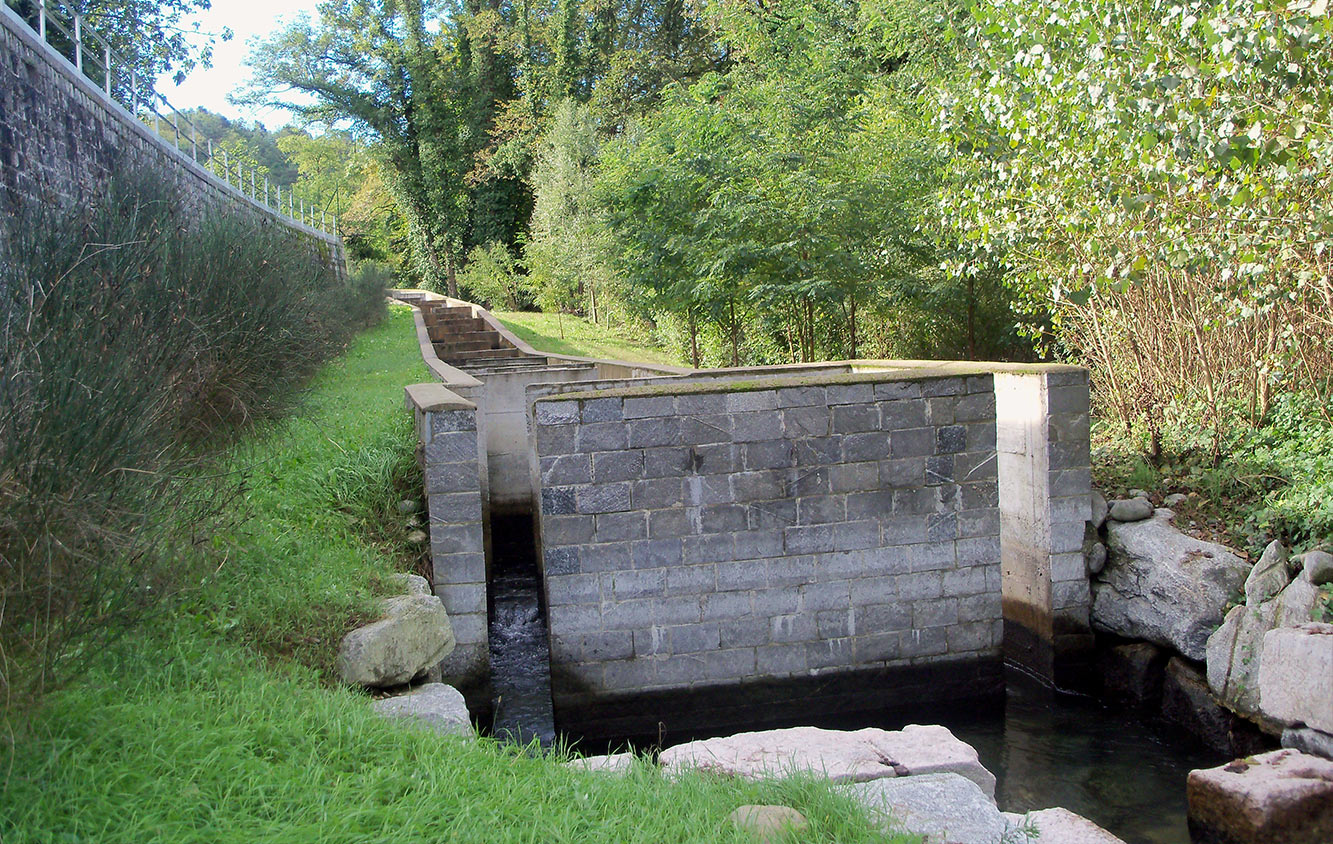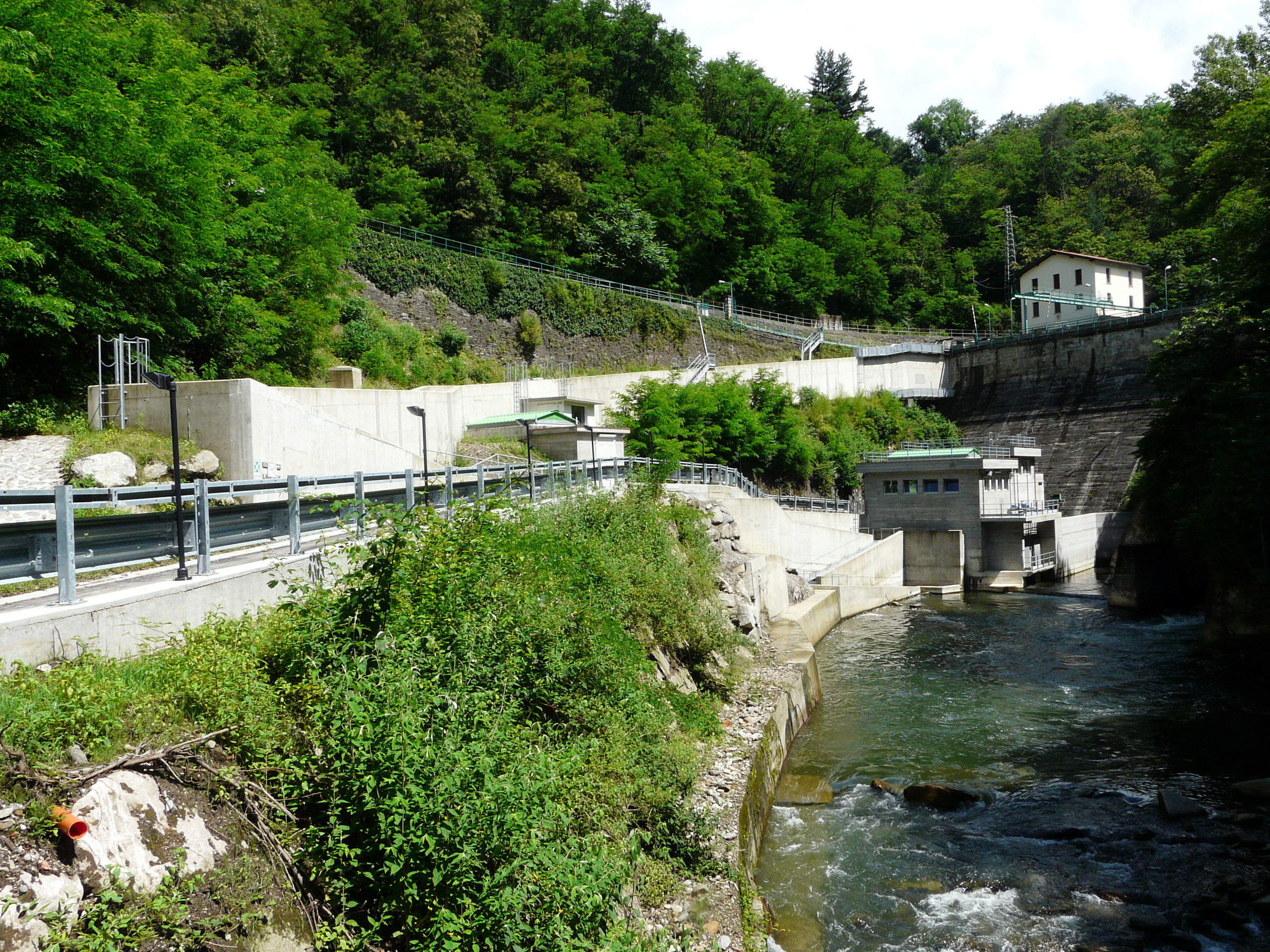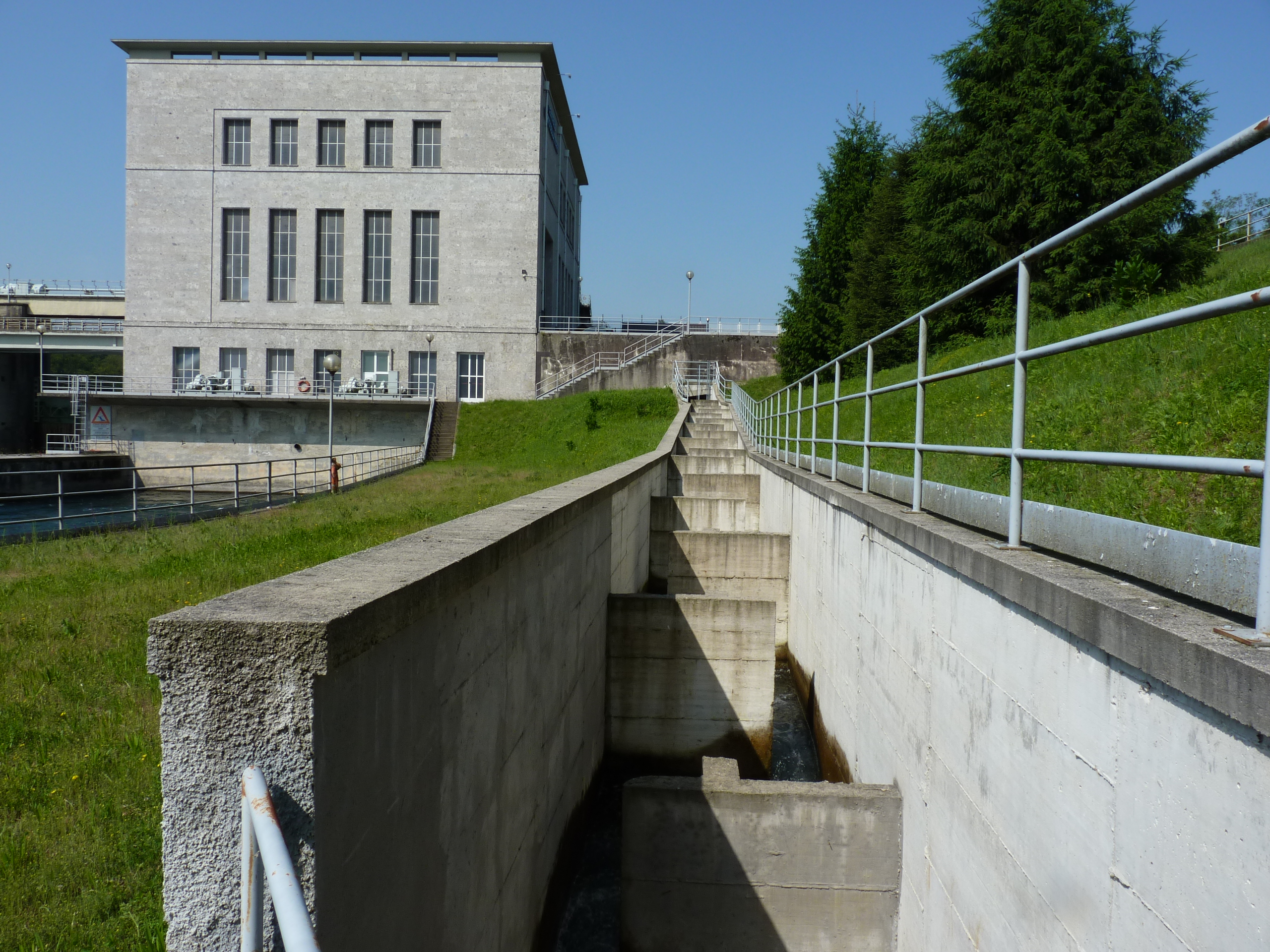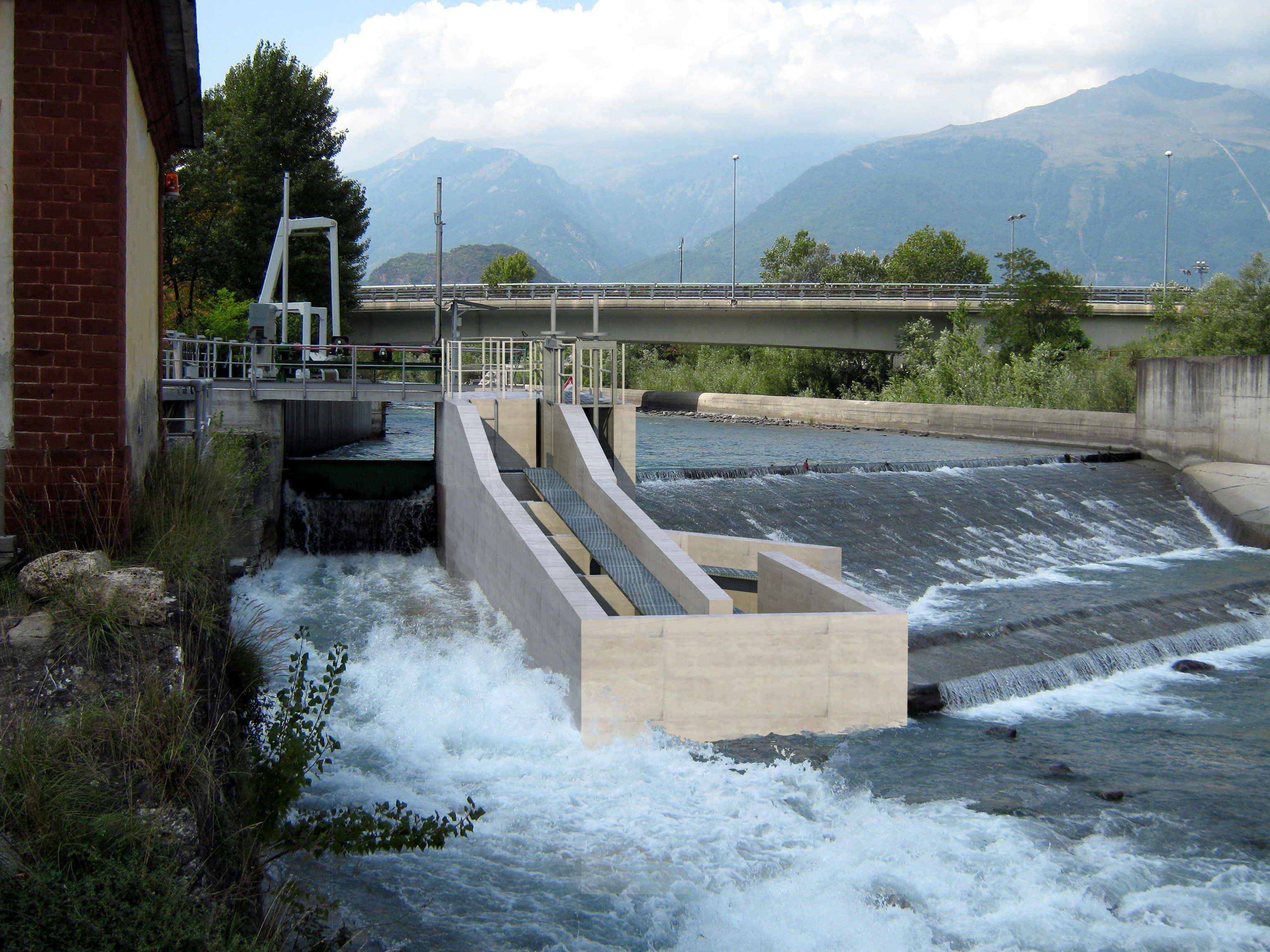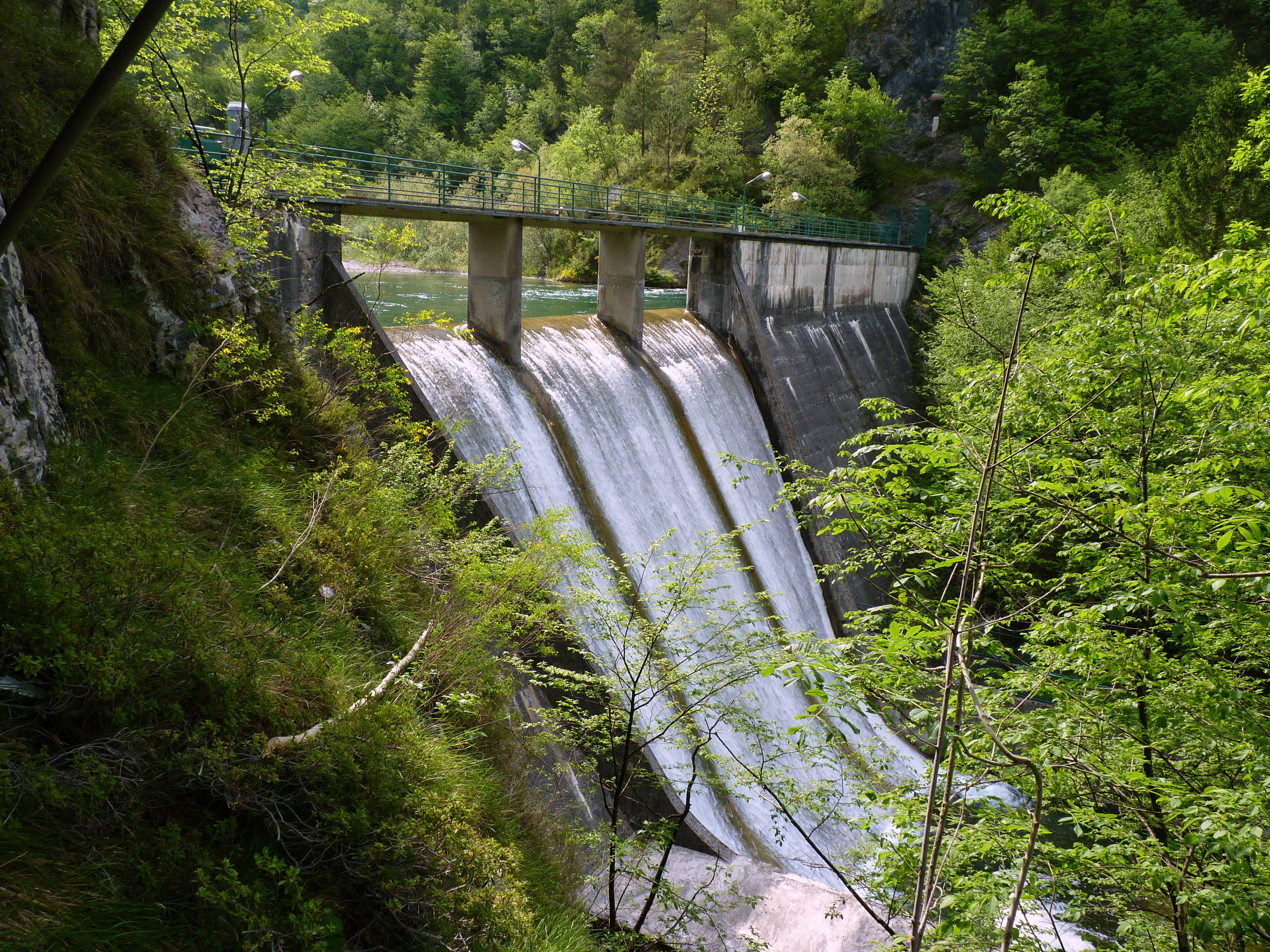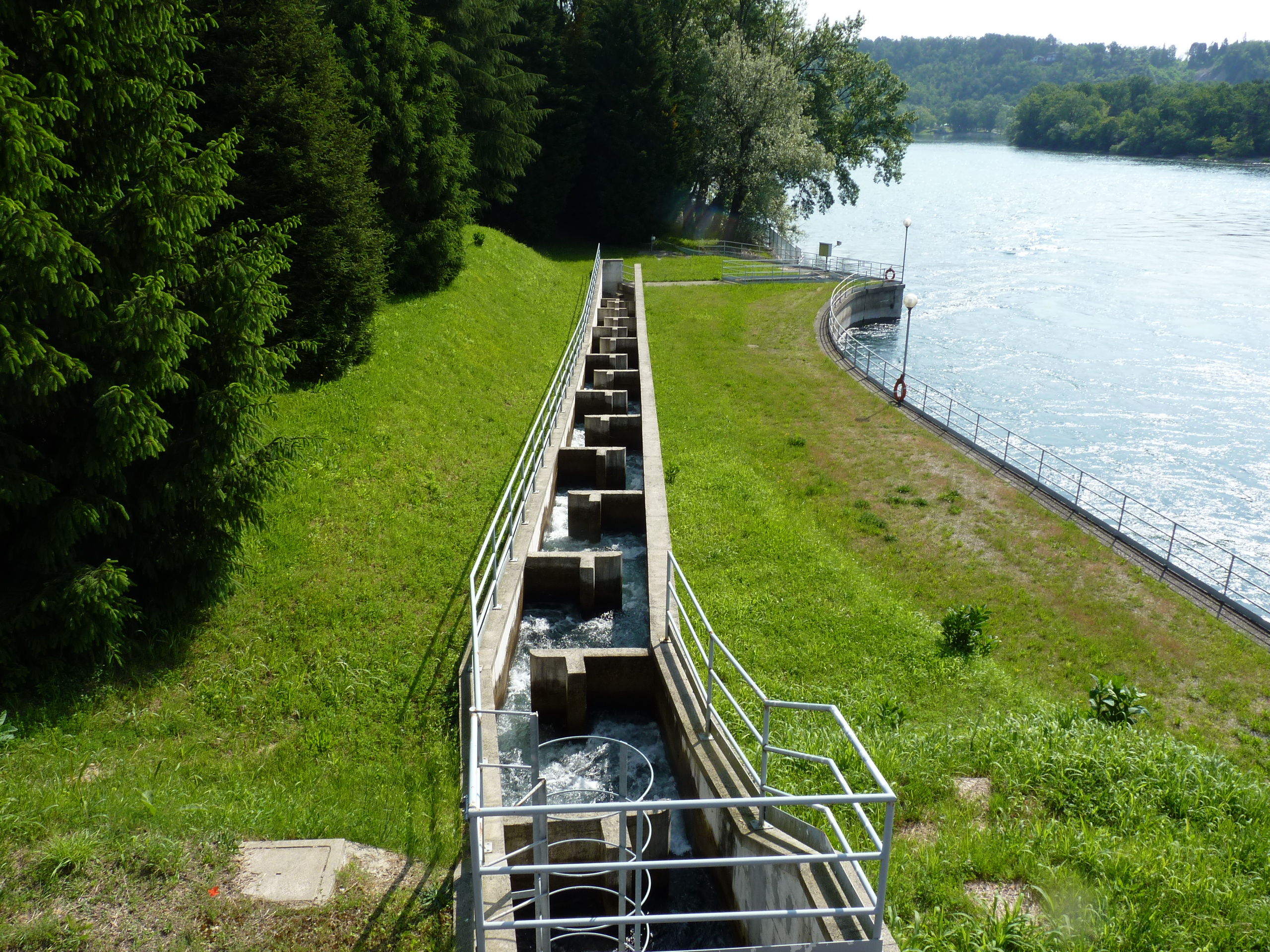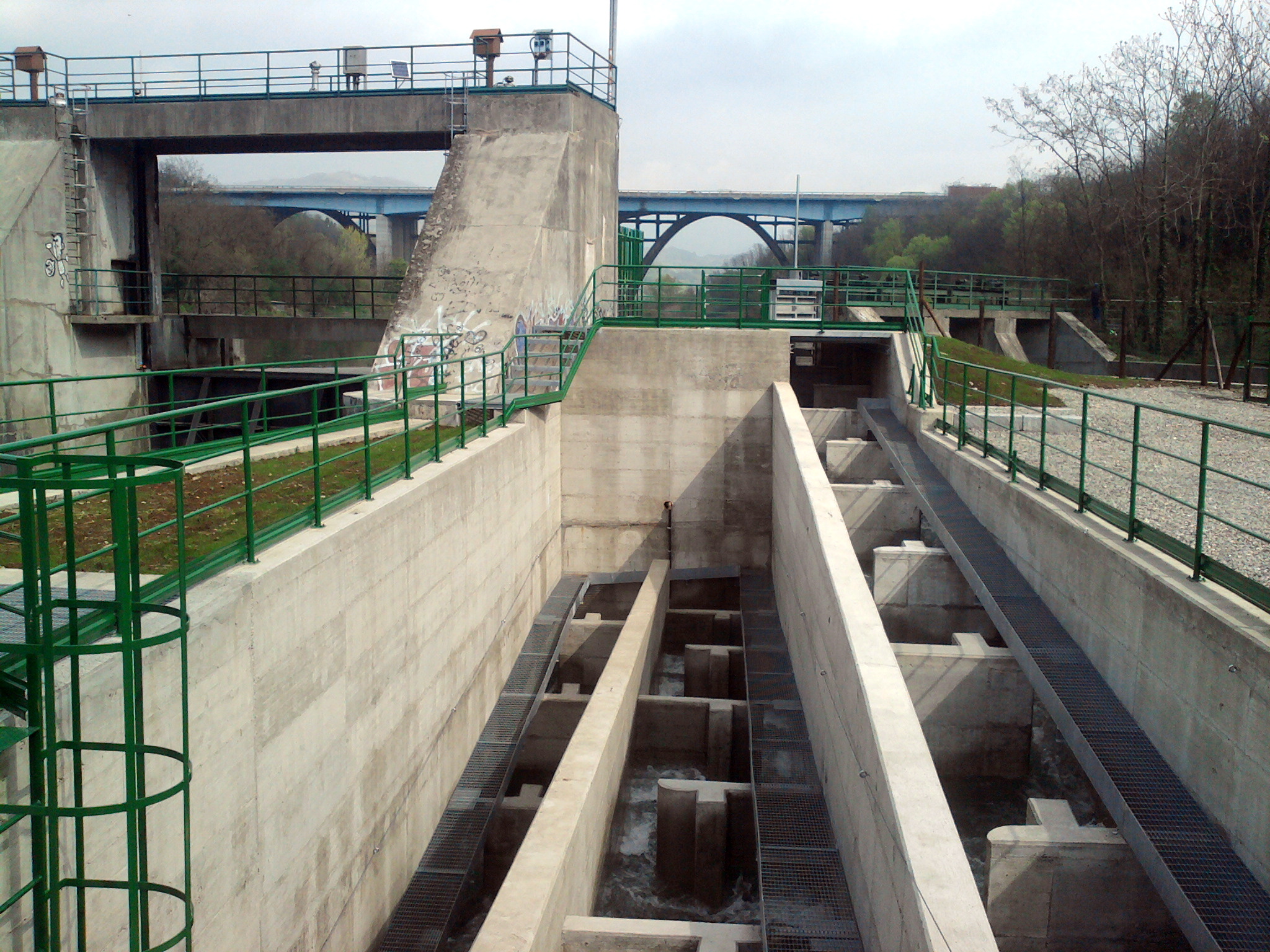It is very rare for a fish to spend its entire life in a single place, in water courses. Most of the fish species, in fact, move from a place to another, depending on the season or the stage of life, looking for better sites for food and reproduction purposes. Just think of highly migratory species such as eels, sturgeons and salmons or the numerous species that migrate for shorter routes, like adult brown trouts, South European nases or Italian riffle dace.
Being strictly connected to fundamental activities such as feeding and reproduction, the migratory activity represents an extremely important behavioural adjustment in response to food shortage or extreme competition for trophic and reproductive sites.
Water courses, however, are often interrupted by barrages, weirs or dams,insuperable barriers for fishes to leap up.
The issue is partially solvable thanks to dedicated solutions called fish passages, artificial structures that allow fishes to overcome huge gaps,creating a true ecological corridor. The reinstatement of the natural connection between different fluvial habitats is therefore the main target of the new policy in dealing with aquatic ecosystems. The realization of new artificial ladders for fishes, allowing migratory flows for fishes, is the first, important step towards the realization of such aim.
Fish pass of any kind are especially designed to lure fishes in a specific point downline of the obstacle and allow them to overcome the barrier, and thus to leap up -or descend- a water course.
Creating a fish passage is not as easy as it seems. There are different things to keep in mind and neither of those can be ignored when building a perfectly functioning structure. The planning must follow clear stages in order to study all the surrounding conditions and the restrictions dictated by the ecological and environmental characteristics of the area in which the fishway will be located.
At first, the discontinuity under consideration is studied in all its essential characteristics, such as typology, dimensions and above all, the height of the scour and how likely to cross itare the fish species in the river.
In order to allow the leaping up of the fishes the work must have structural and dimensional features as to allow enough water to flow but not much turbulence, or else the animal cannot go against the flow and leap up, making the passage useless. It is also fundamental to pick the right collocation for the fish passage, so that fishes can easily find the initial part of the passage and not be distracted by other points with a high flow velocity.
These criteria need to be fully met and the parameters valued by experts in this field, in order to build a structure that really fulfils its role.

